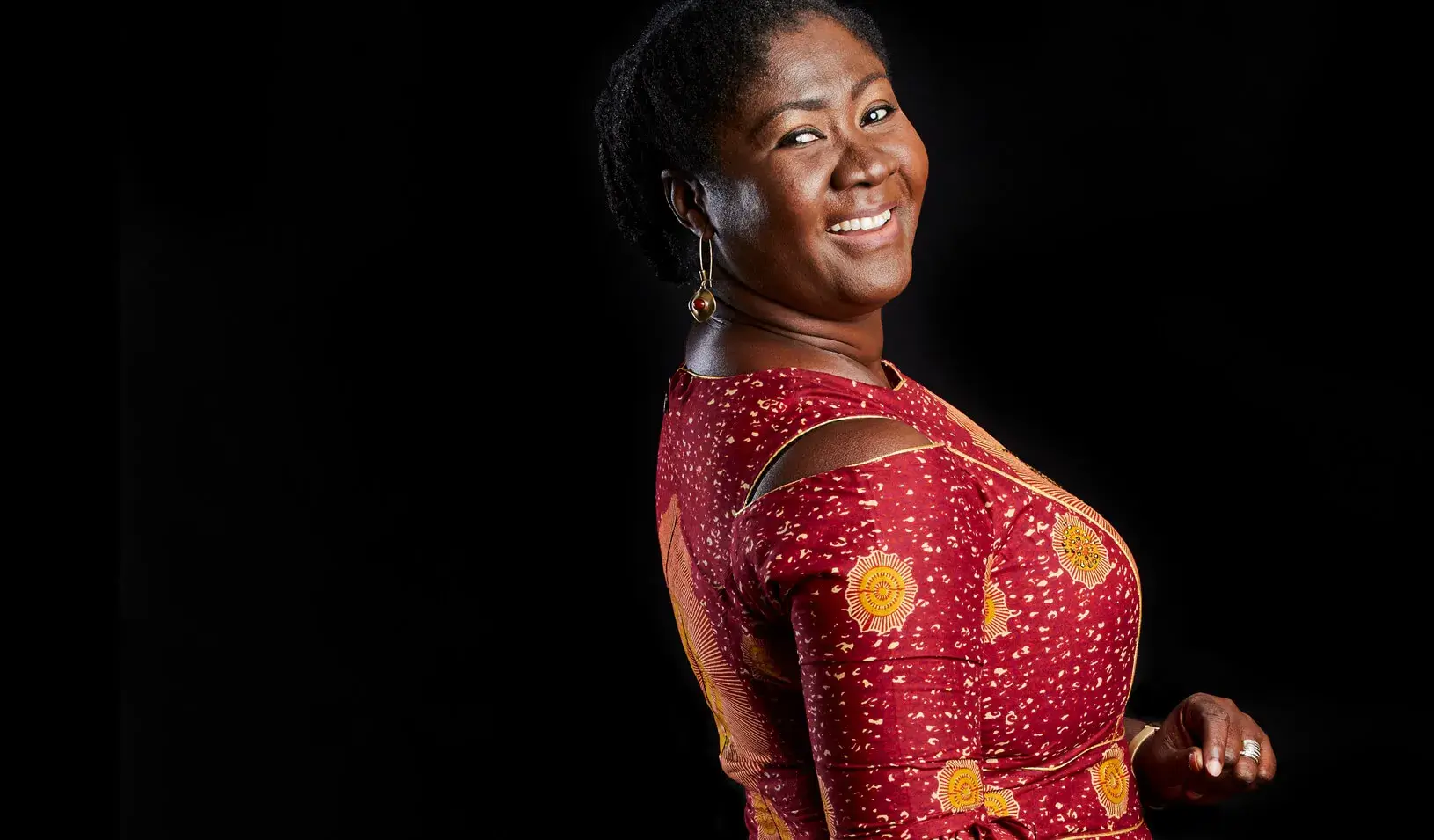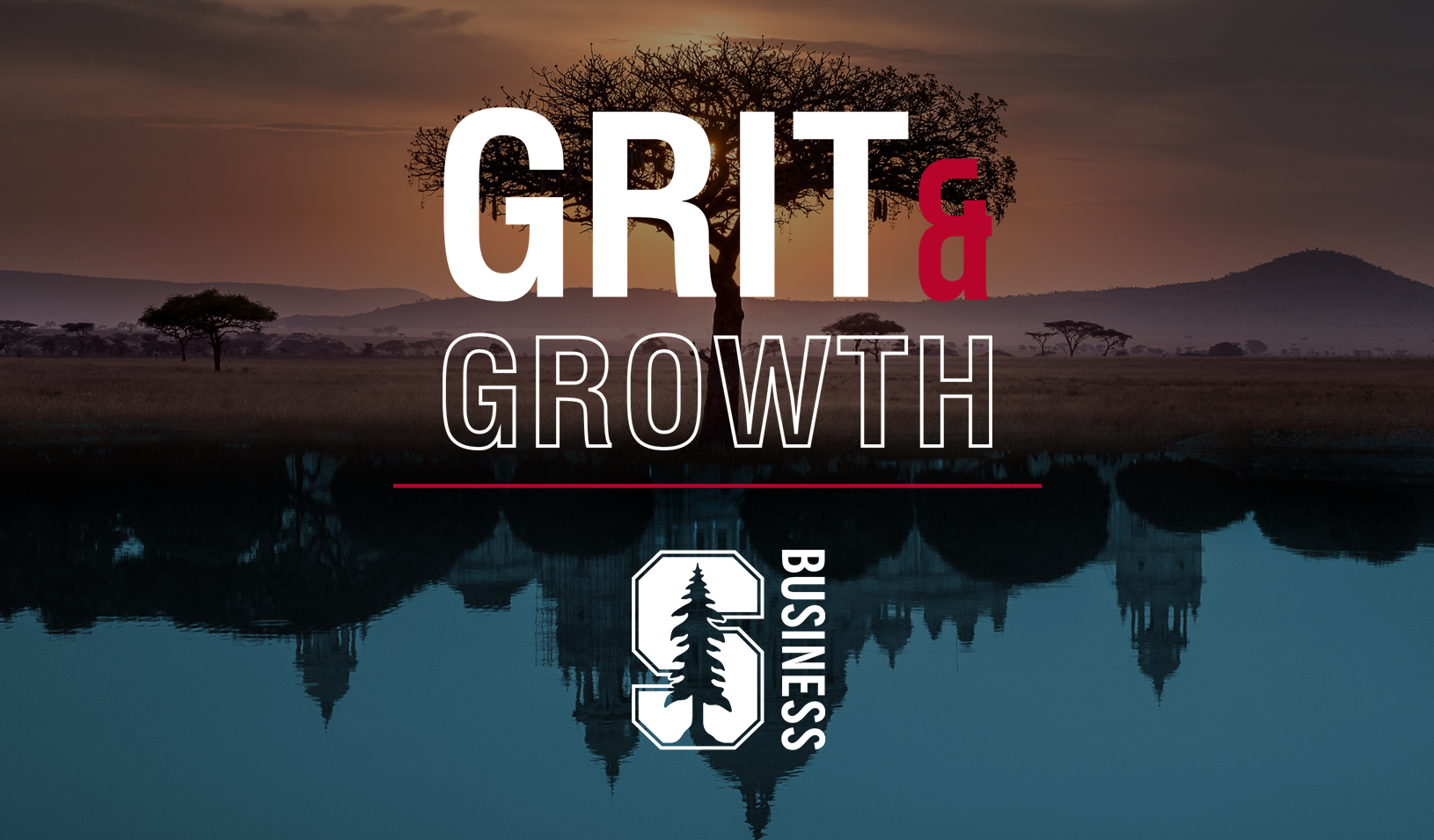Scaling Up and Changing Lives in Africa
How a Ghanaian entrepreneur stitched together a clothing company that employs and houses homeless women.
June 15, 2018

Linda Ampah raised money from family and friends to launch her clothing company: “People pitched in here and there.” | Gabriela Hasbun
Ghanaian fashion designer Linda Ampah took a double leap of faith when she decided to expand her custom clothing company into mass production in 2012.
She not only created a much bigger business, but also wanted to make her KAD Manufacturing a place so welcoming that she could retain skilled workers while operating in a way that honored workplace rights, worker dignity, and livable wages — things she knew might put her at a disadvantage against competitors.
“I went into mass production without knowing what to expect,” says Linda Ampah, the CEO of the Accra-based company. “I was quite unprepared for the challenges — how to manage people, how to manage time, line balancing, things like that. It was bigger than what I was used to, so the problems were bigger.”
Then a friend told her about Stanford GSB’s Seed Transformation Program, a year-long program that offers leadership advice and training to entrepreneurs in Africa and India. Today, Ampah, who completed Seed in 2014, employs 130 workers, many of them recruited from Accra’s streets and trained in-house. She has plans to build housing for her female staffers, a canteen where they can eat, and a nursery for their children. She also is building Scaa new production facility that should enable KAD to grow its workforce to 450 within two years. She hopes to generate more than $1 million in sales this year, up from last year’s $700,000.
How did you hear about the Seed program, and what attracted you to it?
I was sharing my challenges with a friend, an American lady who was running an NGO here in Ghana. When she heard about Stanford Seed, she knew she wasn’t qualified because she was running an NGO. So she called me and said, “You’re qualified, and you need it more than I do.” I thought, anything that would allow me to be better at this gig — why not?
Were you trying to learn specific skills?
I was hoping to become a better manager. What I didn’t expect was that it was an eye-opening moment for me to see the potential I had with KAD Manufacturing. It made me aware that it was a business that could transform many lives, including my own. I hadn’t looked at it that way before. I always thought I’d have to be the manager, the finance person, the accounts person, the everything. Going to Seed made me realize I needed to let these roles fall into other people’s hands who are better equipped to handle them.
Before Seed, I was doing everything on my own. And as Americans say, I was burnt out. My business coach, Corinne Augustine, literally put an ad in the paper to advertise for these positions, then she sat through interviewing people to occupy them. It was beautiful. She told me to give up those roles and concentrate on strategic planning. She was so right.
It’s amazing that you did all that for as long as you did.
I don’t know how! But it showed me I could have done better if I’d had those skills earlier. Corinne was with me for six months, and she’s still with me. Even though she’s not in Ghana, I still talk to her and ask her for direction. We’ve become family.
Can you walk us through the steps you took to capitalize the business in its early years?
I’d done odd jobs to save up some money, so I started with my own money and money from friends and family. People chipped in here and there. We were originally maybe about 12 staff, and then we scaled gradually.
What unique challenges does KAD face and how have you tried to address those?
Because we take people off the streets and train them, it’s expensive. To venture capital people, it doesn’t look as good because we have this big social component. Anyone who invests in KAD has to be willing to walk that journey with us. And it makes our products a little more expensive. You pay maybe a few cents more for our garments, but that’s a small investment in the lives of our staff. It keeps them off the streets and makes a big change in their lives and the lives of their families.
Why is the social component so important to you?
With the kinds of things we do, details and quality are key. We realized that when the workers feel part of the business and have ownership, they give it their all. And we also realized that people who come in already trained sometimes have bad habits, and it was more difficult to get them to learn another style of sewing. It was easier to just pick people and train them from scratch. A lot of them come from the villages, and a lot of them were sleeping outside. We went out in the middle of the night and talked to them, and they were very willing and appreciative. The kind of joy and personal satisfaction I got from doing that I still can’t explain. After that we decided to open our doors and let these people come in because they appreciate it so much. It’s such a joy to see the transformation.
But how did you get from there to the idea of building them housing?
We realized as we were training them that many of them had no place to stay. Their children were not well taken care of. That’s when we decided to have a place to house them. Right now we’re renting, but going forward we’re hoping we can build a hostel, and also provide daycare for the children. At the end of the day, the workers are happy. You are happy. It’s just beautiful.
The thing with these young women is that one person often takes care of about 10 people in their family. So you touch the lives of many people — their children, their mothers, their cousins, their brothers. It’s unbelievable.
You’ve said you plan to expand from 50 employees to 450 within the next five years. Expanding that fast seems like a real challenge.
Right now, we’re at maybe 60% or 70% of capacity in a leased government building. We intend to maximize it up to around 250, do double shifts, before we move to our own property. We’re halfway through [construction]. Because we don’t have any funding from anywhere, we use our own money, so it’s very gradual. When we get a little extra, we work on it a bit. Once we finish it, in about two years, we’ll start with about 250 people but have equipment that will let us scale up to 450.
What’s your most pressing current challenge?
There are two. One is consistent orders from buyers who know our social side and are willing to walk with us. And then also funding from investors. We’re not looking for people to just invest money and wait for returns. We’re looking for investors who will work with us — who believe in this goal and want to join us.
Are there specific competitive strategies that set KAD apart from competitors?
We work with our clients from beginning to end, from the design stage to the sourcing of fabrics. Everything we do — our patterns, our embroidery facility, our rhinestone facility — we keep in-house. It’s a one-stop shop, and that’s our competitive advantage.
Is that something you learned at Stanford?
The Design Thinking class was a light bulb for me. Basically, it means working with your clients to achieve what they want, not you tailoring it and forcing it down their throats. That really stuck with me.
How does your design thinking strategy manifest itself on a day-to-day basis?
Here’s an example. It used to be that I would design school uniforms and tell the clients, “We think this will suit the children in your school.” Now we go to the school first and do a town hall meeting with parents and students so they can tell us what they’d like. We do prototypes, come back to them, work with them, make changes. By time the final product comes out, they’re part of the design, and it’s exactly what they want. We started doing that immediately after the class.
If you had one piece of advice to pass along to any entrepreneurs currently participating in the Seed program, what would it be?
Take the challenge. That program challenges you to move out of your comfort zone. It can be scary and daunting. But take it. It’s worth it.
For media inquiries, visit the Newsroom.
Explore More

Get Ready for Season 4 of Grit & Growth

Short Takes: Trailblazing the Internet of Things in Bangladesh



